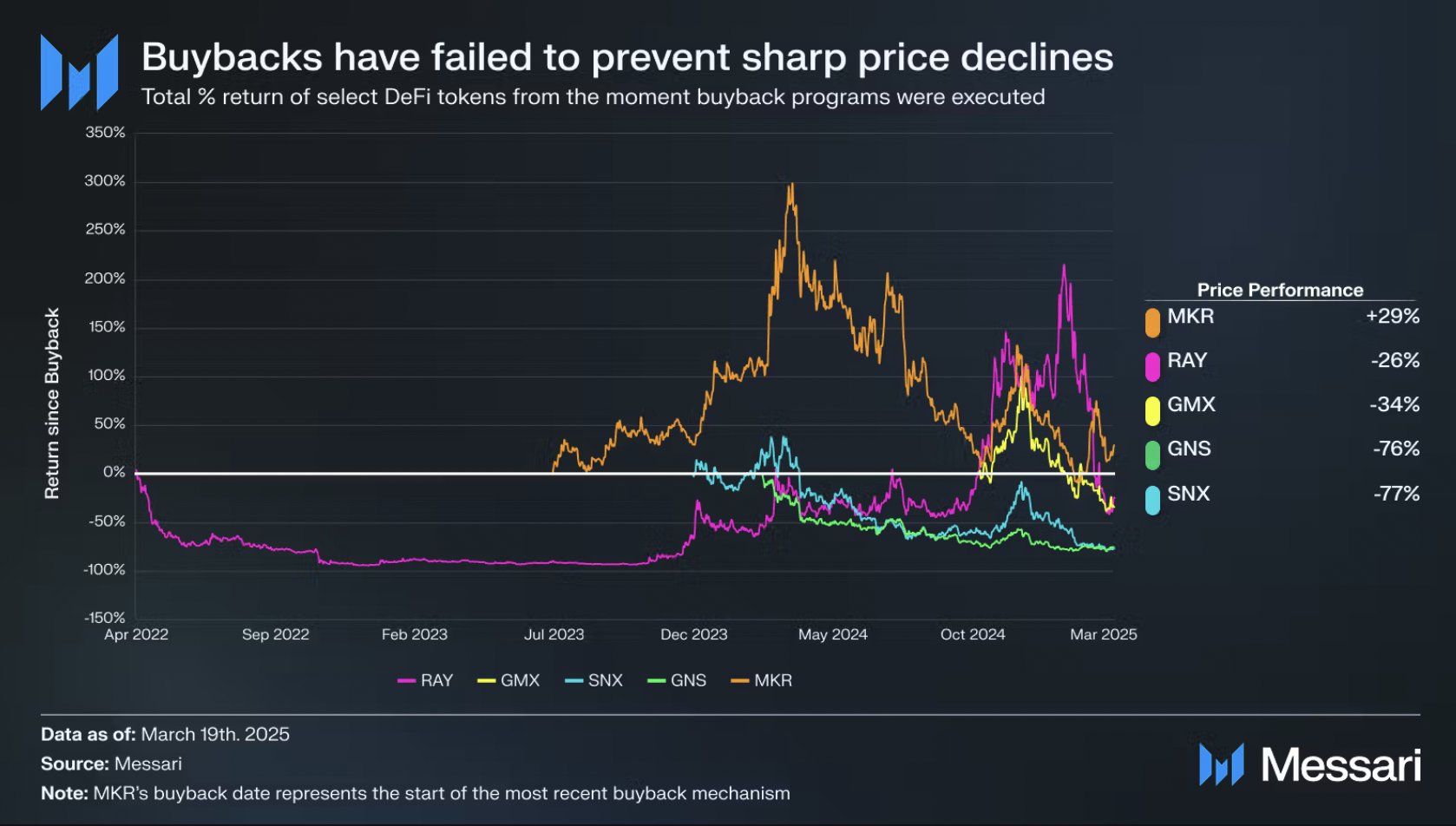
When Buybacks Don’t Save the Price: A Lesson in Tokenomics
I once wrote about the RUNE token and pointed out that even if developers commit to buying back their token from the market, this fact alone doesn't create enough demand to prevent the token's price from falling.
A recent analysis by Messari confirms this idea. After announcing buyback programs, 4 out of 5 tokens tracked by Messari declined in price.
The problem is that developers can't buy back all tokens. And if nobody except the developers actually needs these tokens, then despite the buyback, supply will still exceed demand. As a result, prices will continue to drop.
If you're going to implement a buyback, it should be done in one of two ways:
- Like Circle, Paxos, and other stablecoin issuers do: at a predetermined price (for example, 1 USDP for 1 dollar or 1 EURC for 1 euro).
- Create additional sources of demand so that developers aren't the only potential buyers of the tokens. This is what Binance and Bitget do, for instance. Their tokens are needed to access certain services in their ecosystem (such as getting discounts on trading fees), so traders buy BNB and BGB for these services, and the price of these tokens remains relatively stable.
The developers of RAY, GMX, GNS, and SNX tokens don't do either (nor do the creators of RUNE, which I wrote about previously). The result is visible in Messari's chart.
If a token issuer promises to buy it back - consider whether their buybacks will actually protect the token from price drops. If not, then perhaps it's not worth investing in such a token.
And I'll remind you that BNB, BGB, as well as USDP and EURC tokens are available for exchange at the best rates on rabbit.io.













